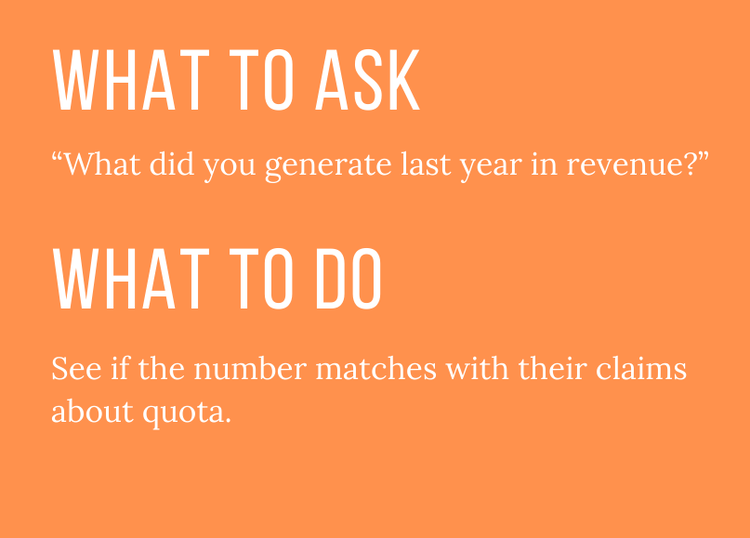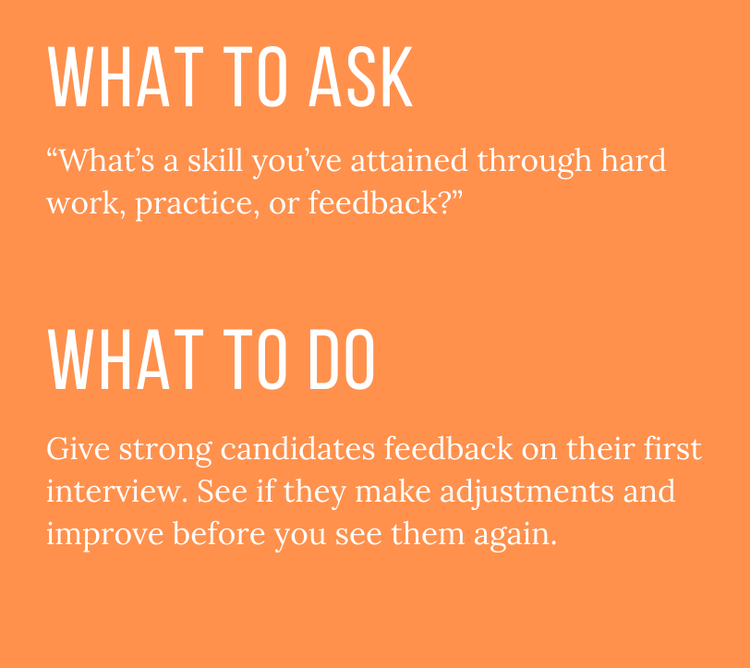Use a hiring process that standardizes information you gather about each candidate, giving everyone the same opportunity to shine.
August 25, 2021
You want to hire the salespeople who are most likely to succeed: true sales professionals who have demonstrated success, defined sales processes, top-notch communication skills, and a commitment to further professional growth. So how are you going to identify and hire them?
The answer is to approach hiring and interviewing with the same level of professionalism and process that you want to find in your new hires. You may be reluctant to spend time defining a process and putting it in place across your organization, then monitoring its effectiveness and refining it. It does sound like a lot of effort when compared to simply talking to some candidates and letting your gut do the deciding.
However, as with any other area of sales professionalism, process is essential and will save time and money in the long run. With a defined, standardized hiring process, you will uncover the same sorts of information about each candidate. You won’t miss anything, and you will be able to make clear, effective, objective comparisons.
You will avoid the regret of hiring someone because they really clicked in the interview, but then finding out that they are lacking some key skill set. You also will rest easy knowing that you gave all your candidates a fair opportunity, rather than letting unconscious bias slip in to tilt the hiring toward the candidates that look and sound the most like the people who are already on your team. Finally, you’ll hire people who have demonstrated relevant skills and possess the drive to continue improving—sales professionals who will deliver value for the long term.
That’s a lot of different pluses. Having a defined interview process is a clear winner. Now we’ll break down what that means and how to implement it.
As soon as you post a job, you will start receiving resumes. Therefore, it’s important to be prepared to evaluate candidates before you post the job ad. While you develop the job ad, keep in mind that you will have the best chance at hiring excellence if you draw from as broad a pool as possible (see last week’s blog). Try to use language that will attract many different kinds of potential candidates, not just ones who are exactly the same as your current staff.
At the same time, prepare for the interviews you will conduct once you hear from candidates. Maestro’s hiring process has five steps:
For each step, identify your goals and what the applicants need to demonstrate in order to move to the next phase of the process. Each part of the process should try to ask different questions and identify different skills, so that the experience is not repetitive or discouraging.
Develop a standard set of questions you will ask and the rubrics you will use to evaluate resumes, interviews, and other materials assessed in the hiring process. Asking standard questions and having a rubric that details your expectations for what earns different score levels is important if you want your hiring to be objective.
Here’s a sample of what this background work could look like:

In this case, the sales leader is interested in hiring someone who is dedicated to ongoing professional growth. They have brainstormed some questions that they think will bring out stories of the candidate’s experiences with professional development and intellectual curiosity.
There is also a rubric: a description of what it takes to score a 1 or a 5. For example, someone who comes into the interview and doesn’t ask any questions about the job or organization is demonstrating a total lack of intellectual curiosity and merits a 1. A rich and wide-ranging set of attributes need to be displayed in the course of the interview in order to get scored as a 5.
There isn’t room in a single blog post to go into detail on each part of the process, so we’ll focus on a few highlights. Throughout the process, remember that clear communication is essential. Show candidates that you value their time, and they’ll be eager to work at your organization if they get offered the job. Make the process confusing or repetitive and the top performers will find work elsewhere!
Since the resume review is the first step, you can expect that you may have to review a whole lot of resumes, and that most candidates will be weeded out at this stage. But you want to identify the strongest candidates and keep them in your pipeline. Research has shown that hiring managers who are tired are less likely to evaluate resumes fairly, so try to undertake this work in reasonable chunks. It is also important to set up standards or a rubric in advance. Then it will be rote to assign the same value to a similar job experience or internship whether the job candidate is your brother or a llama from outer space.
Pay attention to verifiable quantitative details. These remain important in the interview phase. Many salespeople inflate their accomplishments. If a candidate really attained certain landmarks, they should be able to talk about them in different ways without claiming different numbers every time.
This interview is an opportunity to discuss the resume and candidates’ skills and KPIs with them. Verifying their information is only one part of it.

It’s also an opportunity to look for professional attributes like intellectual curiosity and grit and to evaluate how they prepared for the interview, what their process is, and how they present themselves. Right now, they are in essence selling themselves. This demonstrates how they will prepare, what their process will be, and how they will present themselves on behalf of your organization. If anything’s lacking when they are representing themselves, it is a red flag for how they will represent you.
Of these aspects, process is the most important. The best candidates have a defined sales process; even if it differs from how your organization sells, they will have an easier time learning a new process than a salesperson who operates haphazardly would have adapting to a process-driven approach for the first time.
During this initial interview, be sure to ask questions about how the candidate conducts a discovery call. What questions do they ask? How do they close a call? What do they do afterward? The answers to these questions will reveal whether they are a sales professional with a defined process or just winging it.

It’s also possible to uncover information about whether or not a candidate is process-driven without specifically asking about their process. For example, you can ask them about what they know about your organization. If research is a core component of their sales process, they will undoubtedly have researched you and your organization before turning up to the interview. It’s who they are. If, however, they are poorly informed and did not prepare for the interview, it is likely they will also be insufficiently prepared on the job.
Candidates who score well in the first interview should complete an assignment before their second interview. Since writing is such an important part of the job, you want to be sure to hire salespeople who are skilled communicators by email and who think carefully about anything you ask them to write. You may recall Jason Shen’s TED talk from the Sales News earlier this month that argued for the value of work samples in effective hiring. Well, this is your chance.
Ask each candidate to develop a 30-60-90-day plan for how they would get started in your organization. After they send it to you, meet for 45 minutes to discuss. If they continue to impress, assign them to write an email representing a scenario they are likely to encounter on the job. By evaluating their planning, presentation, and communication skills, you will get a much more multi-dimensional picture of the salesperson’s skills and abilities.
This is an opportunity to truly get to know the candidate as a person. Do they present well? What is your impression of them in general, and does this align with the impression they made in their first interview?
The hardest question is the biggest one: Will they be a good fit with your company? How you define “fit” and “culture” are important in order to avoid limiting your search. Joeri Hofmans and Timothy A. Judge have made a persuasive argument for defining culture fit very specifically as “how well [a person’s] values adhere to the values of the organization or team.” This specific alignment leads to better employee success, retention, and innovation.
As with any other quality, values alignment should be assessed using a specific set of questions and evaluated against an objective rubric. Two interviewers should be involved so that they can compare notes. If they are aligned, it is time to move on to the final practical test of skills: the roleplay.
This is a final opportunity to ensure that the candidate prepares well, presents well, and embraces process. Couching it in a real-life scenario will give you the most accurate insight you can get without just sitting them down with a contact list and a telephone.
After the roleplay, you should be able to make a hiring decision with a high degree of confidence that you are selecting someone who is well-suited to the demands of selling in your organization. You will be ready to hit the ground running with them. With their 30-60-90 plan and their demonstrated dedication to process, they have a high likelihood of quick ramping and sustained success.
Hiring is complicated. For advice throughout the process, contact mastery@maestrogroup.co.
Get the Maestro Mastery Blog, straight to your inbox.